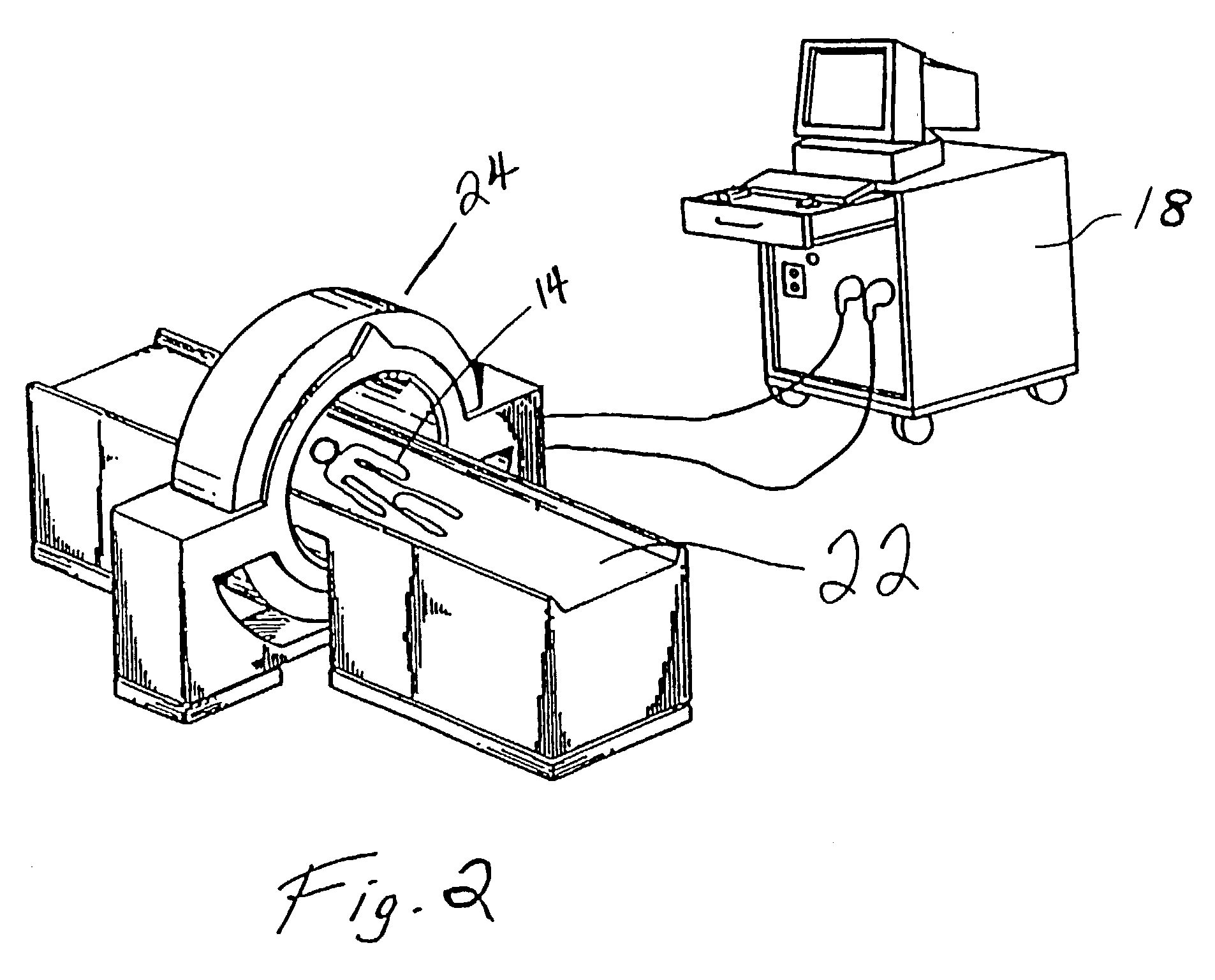System and method for producing a three-dimensional model
a three-dimensional model and system technology, applied in the field of fabrication implants to replace bony structures, can solve the problems of not providing a mechanism, limited the usefulness of their methods and implants to the relevant field, and the implant may not be the so as to achieve the effect of correct shape and/or size and implant drop
- Summary
- Abstract
- Description
- Claims
- Application Information
AI Technical Summary
Benefits of technology
Problems solved by technology
Method used
Image
Examples
Embodiment Construction
[0024]With reference to FIGS. 1-3, a method for creating a 3-dimensional model 10 of a hard tissue of interest 12, which is included within a subject 14, and a plurality of fiducials 16a, 16b, 16c begins in a step A. The hard tissue of interest 12 may include bony structure (e.g., a skull) in the subject 14. The frameless approach to creating fiduciary distances is to position fiducial markers 16, in a step B, in a fixed relationship to the subject 14. In the preferred embodiment (i.e., a frameless technique), the fiducials 16 are spherical markers (e.g., about 1.5 mm thick and including a lead material) placed (adhesed) around a defect 32 on the subject 14. In the preferred embodiment, three (3) fiducials 16 are used. However, additional fiducials may be used, especially if there is any concern that muscles of the subject's 14 facial expression might twitch the marker site during a scan. Alternatively, with reference to FIG. 4, which will be discussed in more detail below, fiducial...
PUM
 Login to View More
Login to View More Abstract
Description
Claims
Application Information
 Login to View More
Login to View More - R&D
- Intellectual Property
- Life Sciences
- Materials
- Tech Scout
- Unparalleled Data Quality
- Higher Quality Content
- 60% Fewer Hallucinations
Browse by: Latest US Patents, China's latest patents, Technical Efficacy Thesaurus, Application Domain, Technology Topic, Popular Technical Reports.
© 2025 PatSnap. All rights reserved.Legal|Privacy policy|Modern Slavery Act Transparency Statement|Sitemap|About US| Contact US: help@patsnap.com



